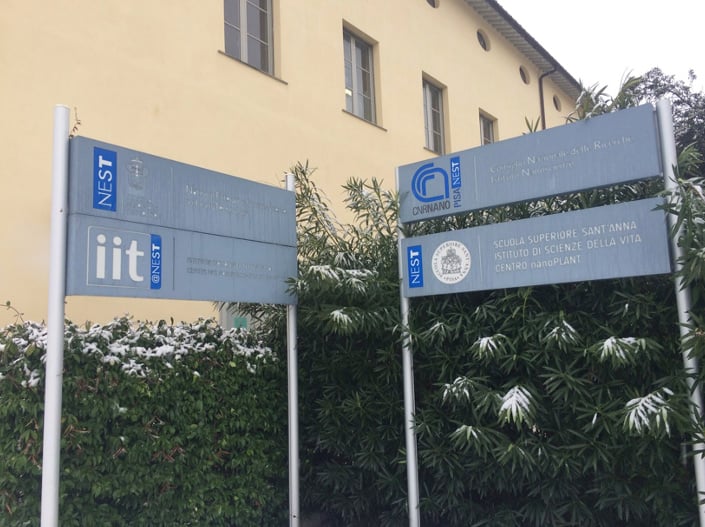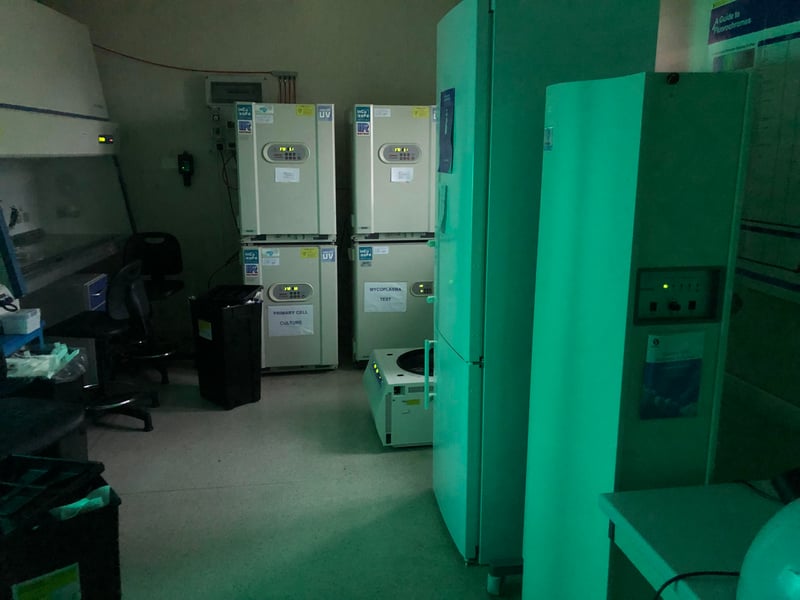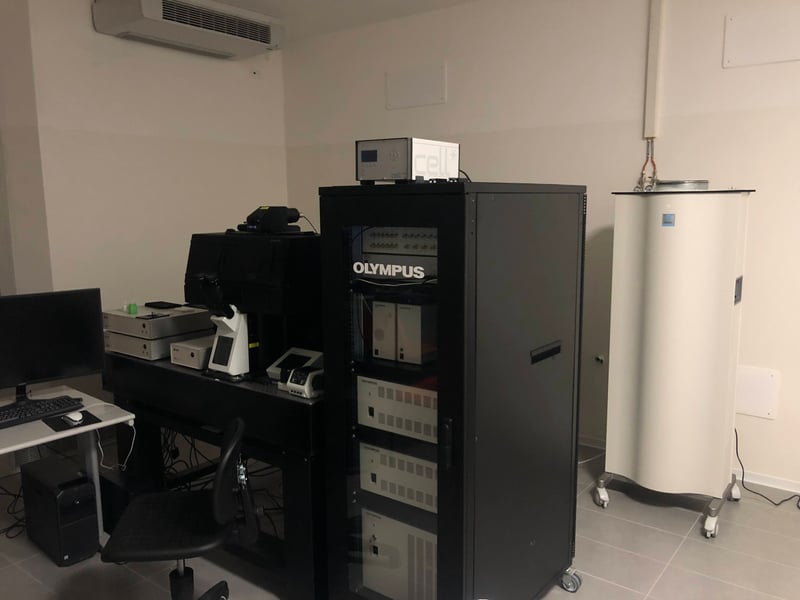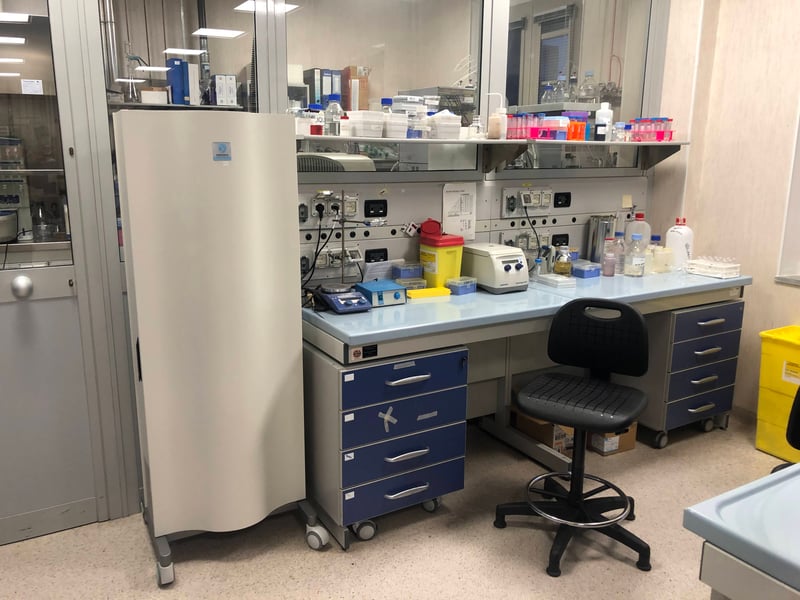- Name: NEST Laboratory - Scuola Normale Superiore
- Location: Piazza San Silvestro 12, 56127 Pisa (Italy)
- About 200 employees, students and collaborators
- University scientific laboratories operating in the field of nanoscience and nanotechnology

Why is air purification needed at NEST laboratories?
In the research laboratories, most of the rooms are equipped with air exchange systems, with a flow rate of 5-6 air changes per hour. Sometimes it is advisable to increase the level of traditional air filtering systems (Hepa or Ulpa) with additional high efficiency air decontamination devices.
Example cases:
- High anthropic presence
- Particular processes with peaks of activity that create problems for the internal microclimate
- Poor air exchange
- Possible generation of particulate matter
- For the purpose of a posteriori study of environmental contamination (trap)
Dr. Pasqualantonio Pingue, Director of Operations at the Laboratory, lists other situations in which an extremely high level of air purification is required:
"Cases that are related to molecular biology, "in vivo" experiments and cell cultures is where we tend to protect the operating person and try to keep the level of possible contamination under control of the analyzed samples".
The outcome of efficiency tests carried out on filterless air decontamination technology
At the beginning of 2020, the NEST University Laboratory in Pisa and Genano Italy started carrying out tests on a Genano professional air decontamination unit. A possible publication of the case study on CBE maintenance is also being evaluated.
After obtaining the desired results, NEST deemed it useful to use the air decontamination device during the cleaning processes of the vacuum chamber of a Chemical Beam Epitaxy (CBE) type growth system, demonstrating that the unit is able to capture micro and nano powders that are generated in the environment during the maintenance processes of the vacuum chamber.
The following laboratories are equipped with four Genano units, including one with a kit to create negative pressure:
- Molecular biology
- Cell cultures
- In vivo microscopy
- Microscopy in a BSL2 environment
To ensure greater control of air quality, some laboratories were equipped with Airwits Genano sensors for PM1, VOC and CO2 particle counts.
GENANO system installed in a high-impact molecular biology laboratory with circulating research personnel
Extra benefits Genano air decontamination brings for the laboratories
On top of capturing even the nano sized particles and safeguarding the health of operating personell, Dr. Pingue comments the benefits of using Genano unit:
"The researchers were able to verify the type of substances captured by the unit through analyzing the residue from the collection tray inside the air decontamination unit."
Also high-efficiency active carbon ensures the elimination of solvent odors and volatile organic compounds (VOCs) for the benefit of staff health.
The future of air purification collaboration
In the coming years, NEST's intention is to continue with the air purification project thanks to ministerial funding received for sanitation activities, closely linked to the COVID-19 emergency.
Dr. Pingue highlighted some important benefits of installing the Genano systems:
"On the one hand, we have been able to test by means of particulate "capture" and its subsequent ICP-MS analysis, the specifics of contamination of the working environment. On the other hand we have verified how users have declared an improvement in working conditions in terms of perceived odors".

GENANO system in a cell culture laboratory: tests verify its ability to prevent mold and mildew in cultures that are stored in incubators and analyzed under a biohazard hood.

GENANO system in the BSL2 fluorescence microscopy lab that will soon be set up in "negative pressure".

.png)